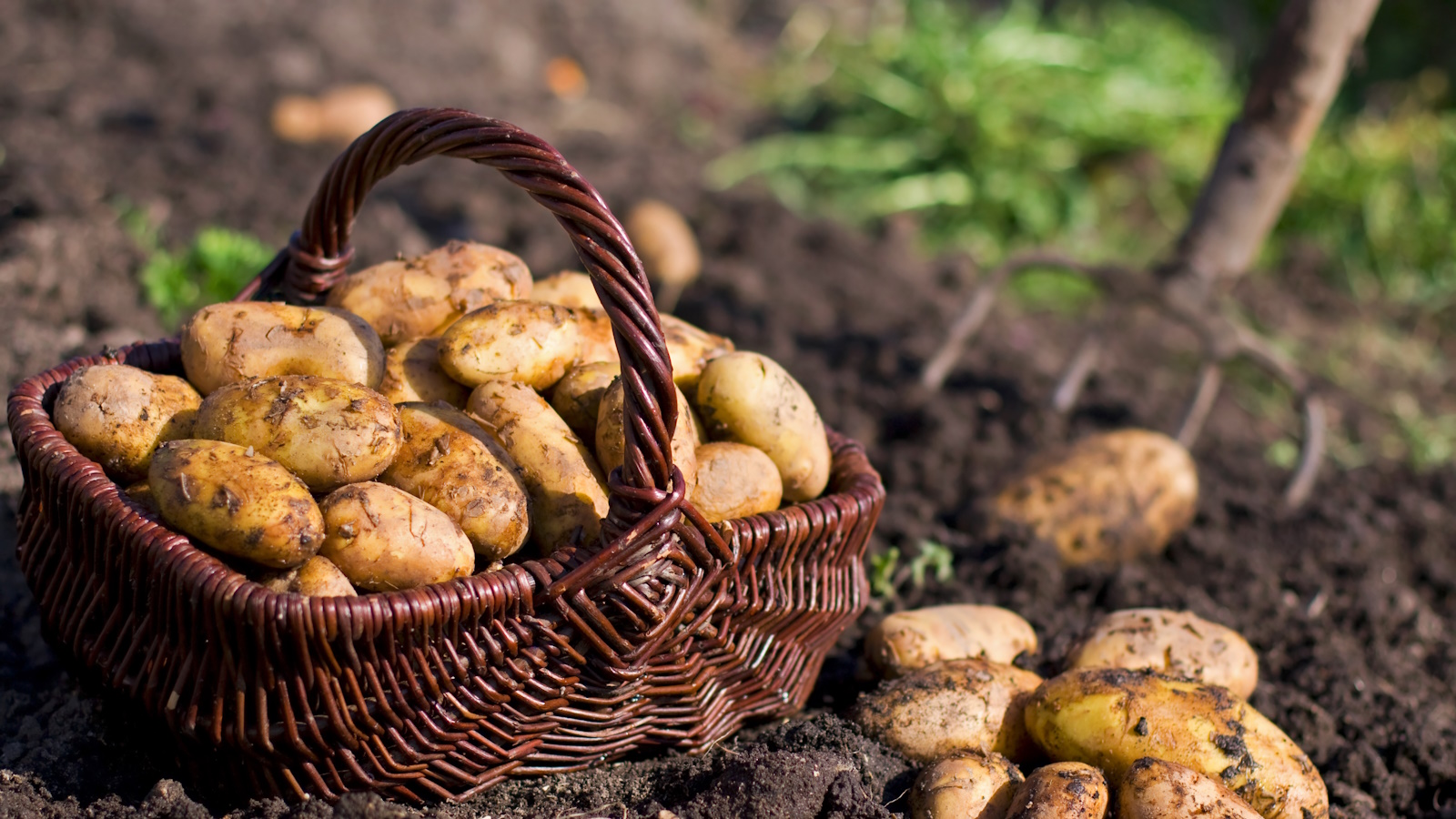
As the owner of an ever-expanding houseplant collection, it is a given that from time to time some of them will succumb to a pest problem. Nobody wants bugs and pests in their home, so when I heard about a trick to get rid of fungus gnats using a potato I was eager to give it a try on an infested Chinese money plant - albeit with an ounce of scepticism.
At this time of year when the weather is still quite warm and wet, I find that certain houseplant pests can appear and multiply quickly. I’ve been tending to houseplants since way before they became the must-have interiors accessory, and along the way I’ve tried a lot of natural, eco-friendly ways to get rid of these pesky flies, with varying degrees of success.
Using sticky traps, sprinkling cinnamon on the soil, and spraying plants with neem oil does have an effect on getting rid of fungus gnats, but it’s often tricky to know how well these methods are working to eradicate them - if at all. This time, however, the results were clear to see. Here, I share everything I now know about how to use a potato to get rid of fungus gnats.
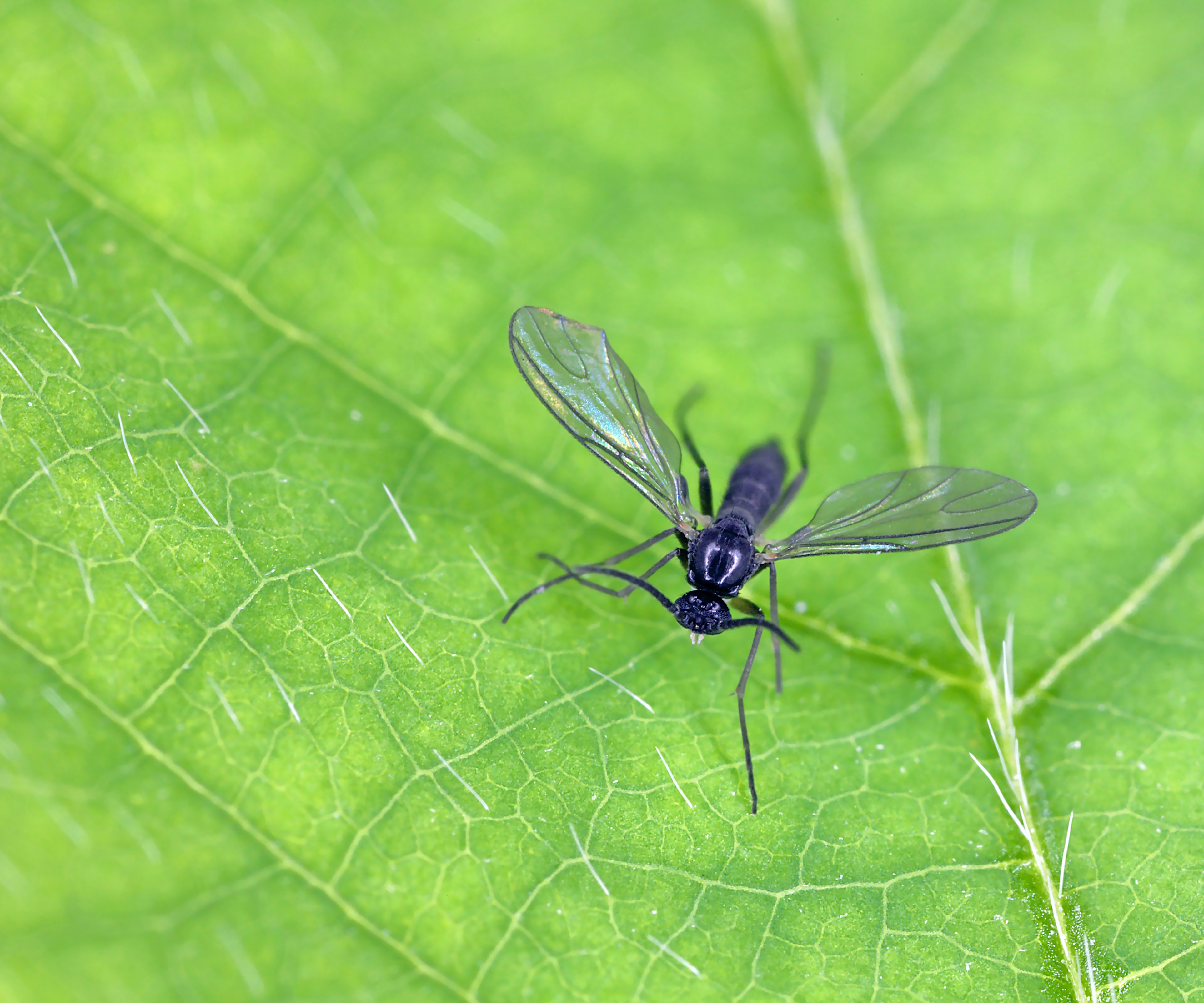
What are fungus gnats?
Fungus gnats are tiny black flies which like to make their home in warm, moist soil. They look a bit like mosquitos, but they don’t pose any threat to humans or pets. The insect larvae are roughly 1cm long and live in the soil.
Fungus gnats won’t do very much damage to your plants, they are just a nuisance and unsightly - especially if they occur in large numbers. The larvae, however, can have a negative impact on plants because they sap nutrients from the soil and feed on compost, organic mulch, roots and root hairs. This can cause problems for your houseplants, especially young ones with lesser developed root systems.
Why do potato slices work to get rid of fungus gnats?
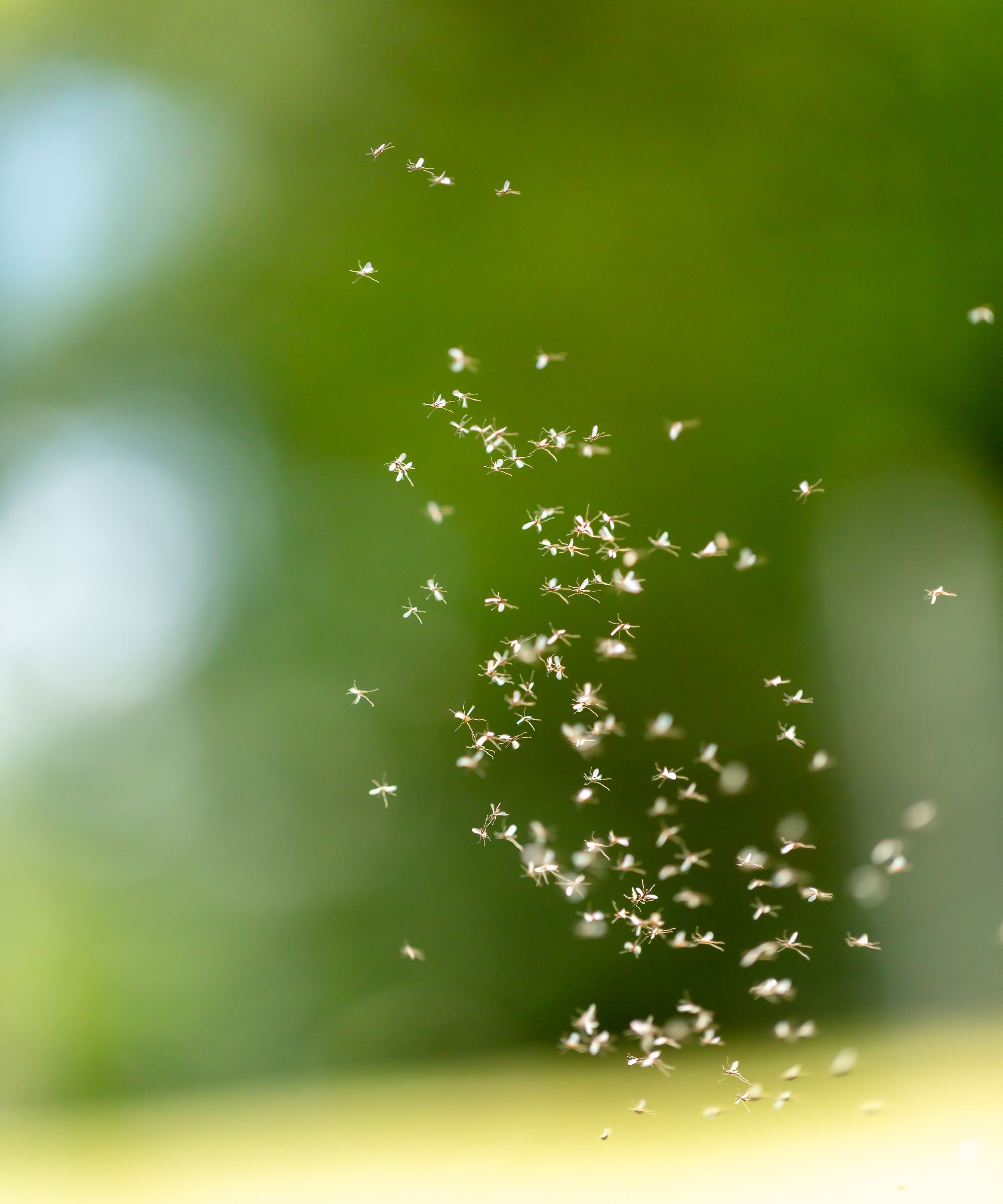
Fungus gnat larvae like to live in potting soil and they love raw potato. They are attracted to the potato slices to feed, which allows you to draw them out of the soil naturally, and also to see the extent of your infestation.
In my view, the reason this works so well in comparison to other pest repellent strategies is that it tackles the problem of larvae, not just the flies themselves. It is also a very clear indicator of how many larvae you are dealing with, and whether you may need to add other methods to help tackle the problem.
How to get rid of fungus gnats using a potato - step-by-step
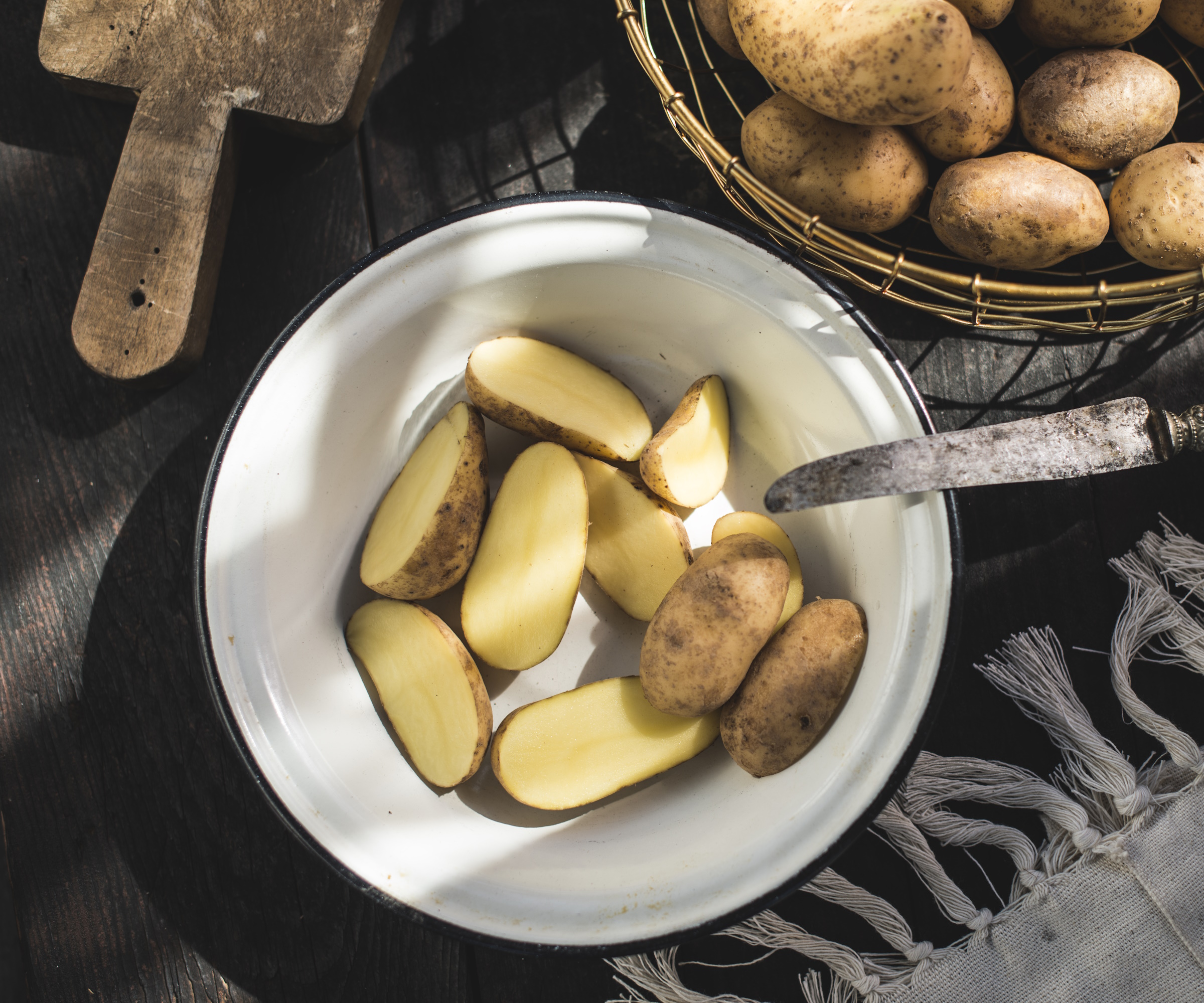
- Take a raw potato and cut it into slices about 1 inch thick.
- Press these slices flesh-side down into the soil surrounding your plant. You want to push them into the soil so that they are almost buried, but still visible on the surface to make it quick and easy to remove them.
- Wait for approximately six to eight hours, then remove the potato slices to see how many larvae are covering them. Dispose of the used slices.
- Replace with fresh potato slices to repeat the process as required and draw out more larvae.
I continued the process with new slices four times over two days, until the numbers of larvae had dramatically reduced. What this told me was that my fungus gnat infestation was not too serious, and that I would be able to control the issue fairly easily from this point.
If you see a large number of larvae crawling on your potato, this is a clear indicator that your infestation is heavy. Fungus gnats can lay up to 200 eggs at a time, so if you have a large plant, for instance, it would be wise to use other methods in addition to a potato to completely clear your plant of fungus gnats.
After using the potato trick, I decided to also re-pot my Chinese money plant - it had grown three pup plants ready for me to propagate anyway - so I could be completely sure the larvae were not going to reappear. I also gave the leaves a good spritzing with neem oil to get rid of any remaining flies, and then washed it under the shower head. It is now looking very healthy, shiny and bug free.
Other methods for getting rid of fungus gnats on houseplants
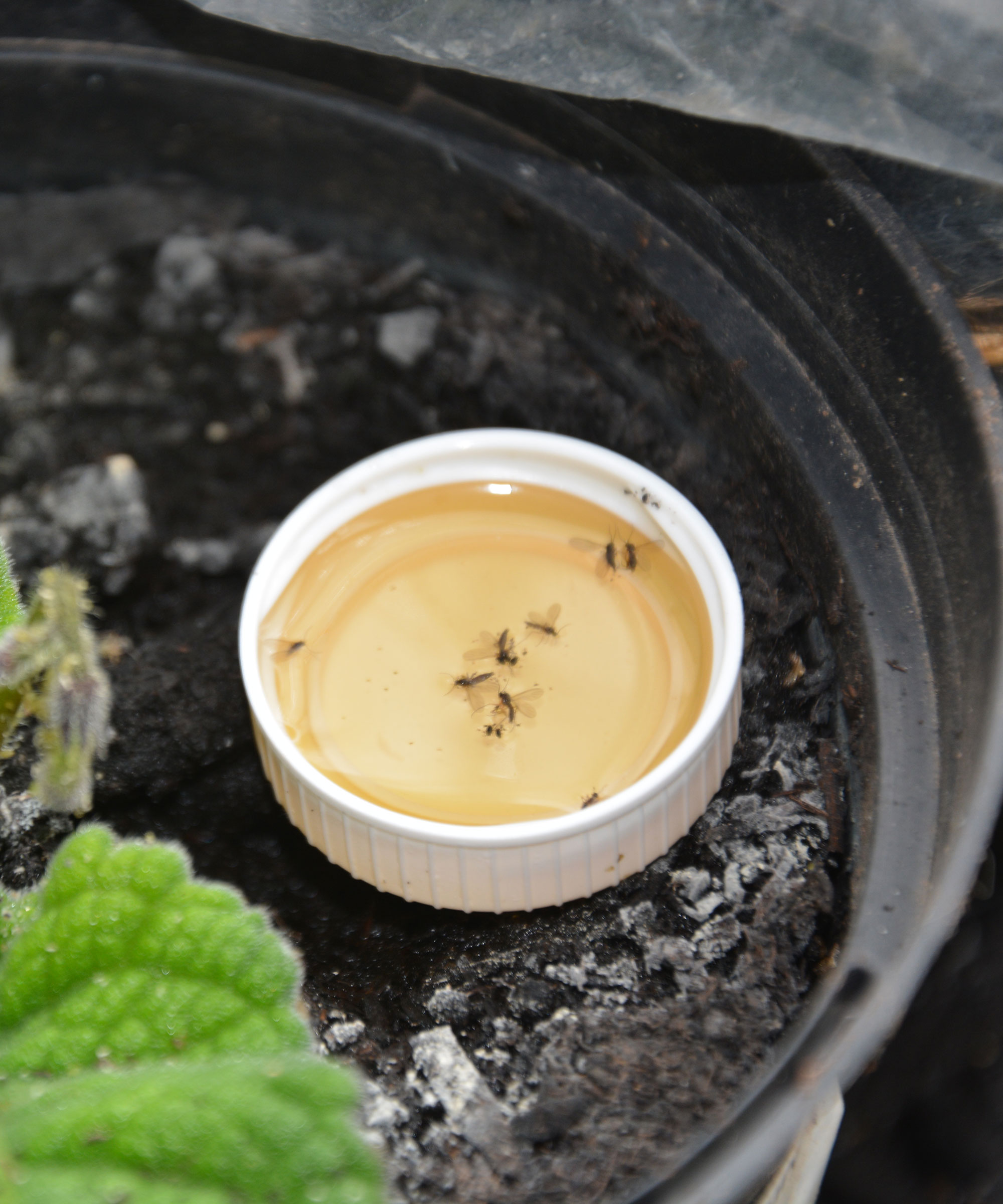
There are lots of other ways you can help to prevent or deal with a houseplant gnat infestation.
Tenielle Jordison, H&G news writer and owner of a vast houseplant collection, advises to always ensure good air flow between plants and to use the right kind of potting mix to prevent gnats from becoming a problem.
'When I first started tending to houseplants, I would use quite a dense potting soil that wasn't quite right for each of my plants. This incorrect potting mix not only created a damp environment for fungus gnats to thrive, but it also caused foliage to turn yellow and curl,' she says.
'I switched to well-draining houseplant soil, like this indoor potting mix from Amazon, to ensure my plants wouldn't be sitting in oversaturated soil and could release excess moisture effectively.'
Other effective ways to combat fungus gnats include using apple cider vinegar traps, as shown in the image above, and yellow sticky traps, available from Amazon - both these methods will catch and kill the flies. You can also use organic neem oil on the leaves of your plant, and mosquito bits, available from Amazon, in the soil, which are a biological control to help eradicate larvae.
Using any of the methods mentioned above alongside the potato trick is a sure way to manage and get rid of fungus gnats on houseplants. If you moved your houseplants outdoors over the summer and are getting ready to bring them back inside, it's crucial to also understand know how to prevent pests when you bring houseplants back indoors.







